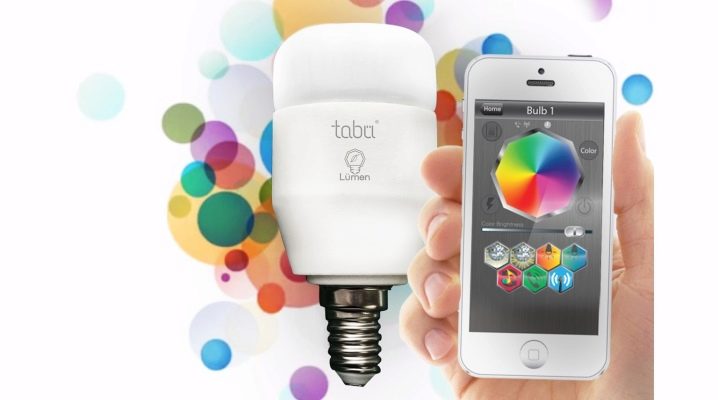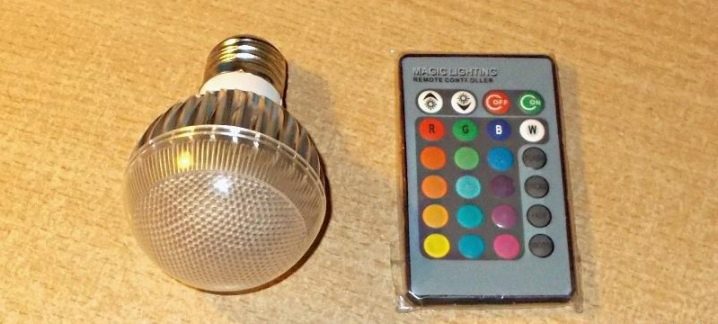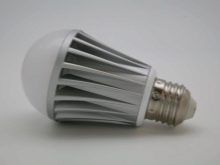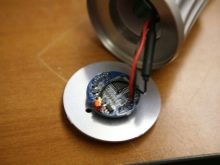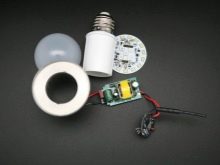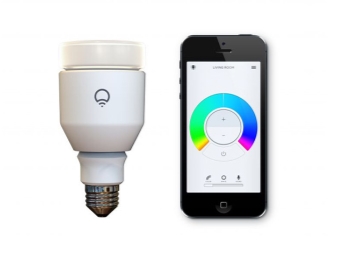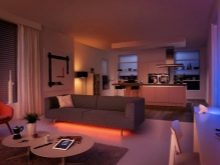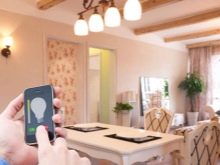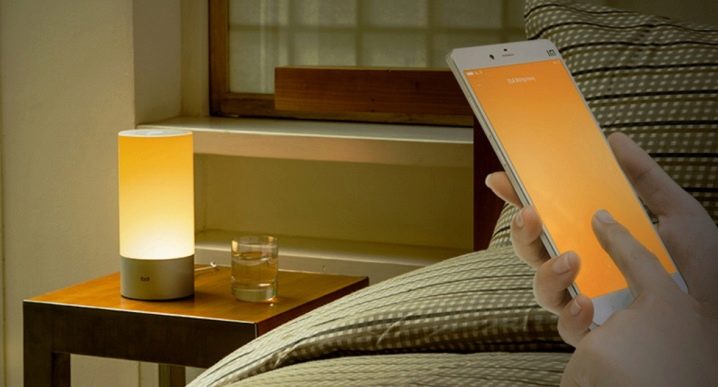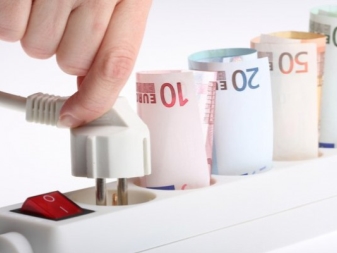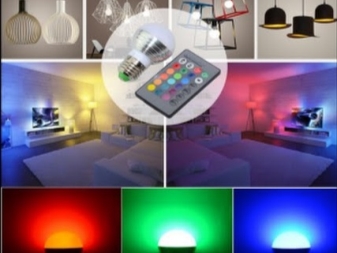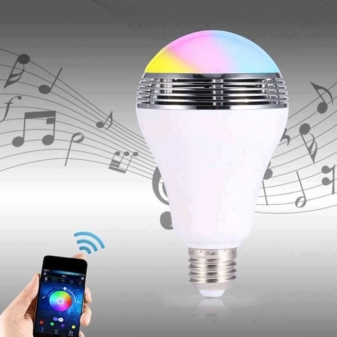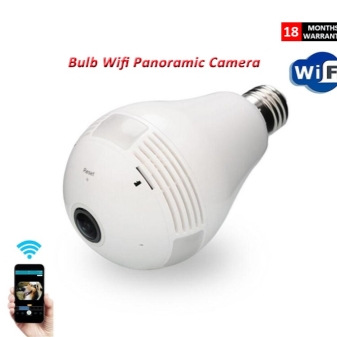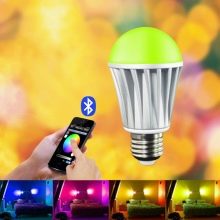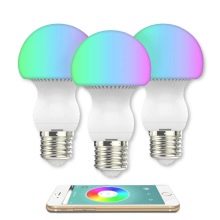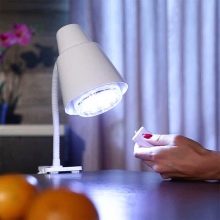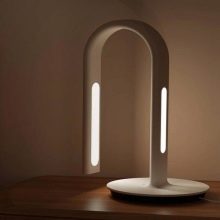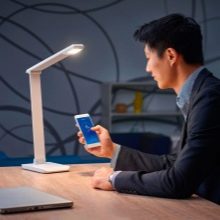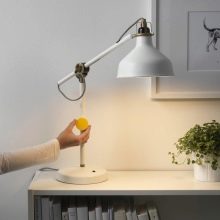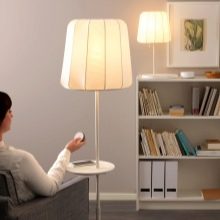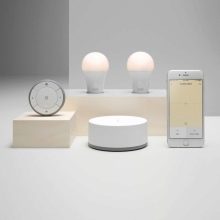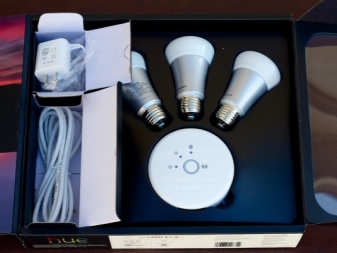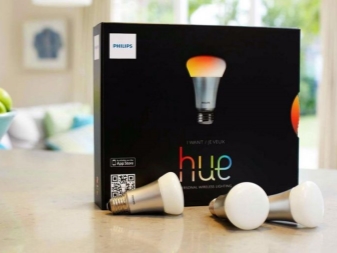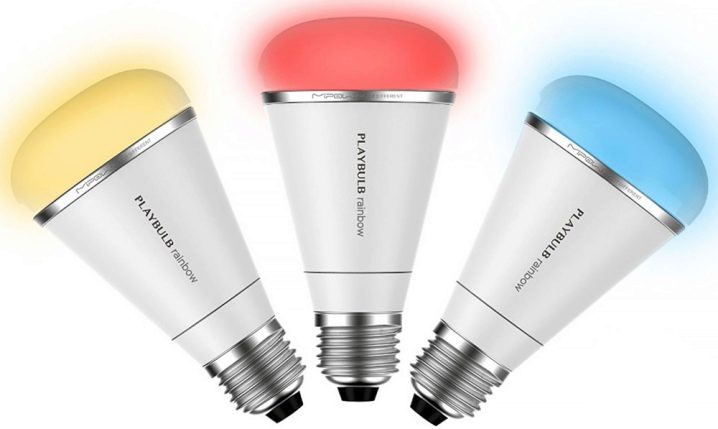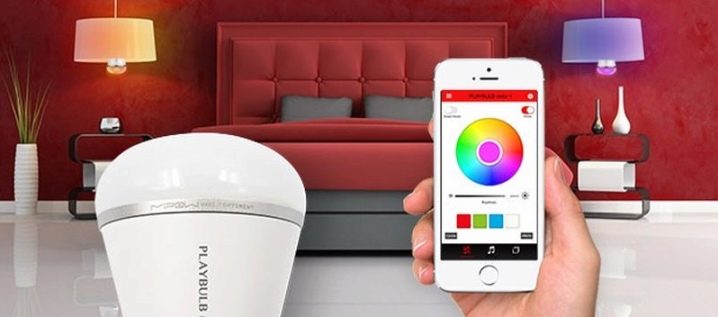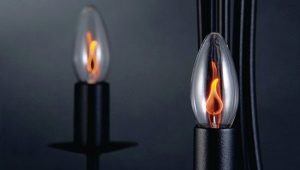Smart lamp
Not everyone can immediately understand what a “smart” lamp is. The very first, perhaps, are those who know what a “smart” house is - a room, the space of which is controlled wirelessly. The heating is self-regulating, the windows themselves are ventilated, the microwave is controlled from the smartphone, and the light itself turns on at the request of the owner. "Smart" lamps are made taking into account the fact that The user can change not only the spectrum of lighting, but also its color, and all this wirelessly. Also, smart lamps include table and floor devices with a touch-type control.
What it is?
A smart lamp is a lighting element that can be programmed in advance or controlled in real time by remote control. Currently, the most famous manufacturers of these devices are Koreans. LG, Philips, wireless technology leaders are Chinese TP-Linkand company Life Control.
Such a “smart” device consists of a standard base, an aluminum body, a plexiglas cap, LEDs and a controller that controls all the lighting processes.Depending on the type of lamp inside it, a photo or video camera or microphone can be installed. The most budget models only react to movement in the room (the sensor is built into the lamp itself, and not purchased separately), the most advanced ones allow imitate being in a person’s room, reproducing his mode of life.
The lamp, controlled via Bluetooth, in its default settings has a warm white emission spectrum. To use all the features of the device, you need a smartphone and an application on it. Control is limited to adjusting the brightness, changing colors (blue, yellow, red, green, etc.), operating mode (ripple, breathing, stroboscope, iridescent transfusion from one color to another) and the speed of changing modes.
The bulb controlled by Wi-Fi has its own ip-address in the wireless home network and is recognized by the network as a separate device.
Why do we need?
This light bulb has a lot of advantages. One of them is the mode of imitation of finding a person in the room. This is a great way to mislead those who want to encroach on your property at the time of departure. Lamps with imitation mode are trained during the week. During this time, the "brain" inside the device remembers your normal mode during the day - working and weekend. After activating the mode, it will accurately simulate your presence. For those who are afraid that the cost of electricity will exceed the norm, there is information that the light will turn on only half the normal power. From the side it will not be noticeable, but the costs will still be reduced.
Additionally, a smart lamp can wake you up in the mornings at a specified time, automatically dim the brightness when you turn on the TV, and even blink to warn you that a new message has arrived on the phone or a missed call has appeared.
Advantages and disadvantages
The positive aspects of such devices include:
- significant energy savings (due to the built-in sensors that turn on the light only when the lighting in the room drops to a certain level and there is a person in this room);
- the ability to turn on and off the light anywhere in the house, without getting up from the sofa (suitable for parents of young children who are afraid to stay in the dark);
- the ability to use one lamp, changing the color of its diode;
- You can choose a lamp with built-in speakers and listen to music from any remote device incorporated into the home network. True, the power of the speakers is small - only 6 W;
- a camera and a voice recorder in the lamp allow you to record what is happening in the house during your absence, a sort of spy thing;
- A lamp with a built-in smoke detector can prevent a fire by informing the landlord of smoke in time.
The disadvantages are that:
- A smart device is most susceptible to hacker attacks. Through such a light bulb, an experienced burglar can break into the entire system of a “smart” home and cause substantial damage to property, including its full removal from the home;
- high price and expensive service;
- the need to use additional devices (smartphones, tablets) to control the lighting.
Kinds
Lighting devices are divided into two types: lamps, screwed into a conventional connector and desktop devices.
Table lamps can be of various shapes and sizes. For example, Xiaomi MJTD01YL "Smart LED Desk Lamp" and a lamp from Philips they are two thin tubes, one of which is a leg, the second, located at a right angle, is the lamp itself.Lamp from Ikea more traditional, it has a classic dome and a round leg.
"Tradfri" Ikea
A popular company could not ignore the device for a “smart” home, so it released a pilot version of a smart lamp called "Trådfri"that in translation means "without wires." The lamp was the prototype for the device. Philips "Hue", which does not work without a single network database. That is, if you want to insert the lamp into a conventional device without a controller, it will not work.
The device is controlled via an application on a smartphone and involves controlling the brightness and temperature of the light spectrum. True, there are only three modes for 2200, 2700 and 4000 Kelvin. To some, this will seem a little, but if you think about it, it is enough to periodically make changes to the backlight.
Brightness can be controlled not only from a smartphone, but also with the help of a mechanical controller, which, rotating in a circle (like the wheel of an old iPod), reduces or adds brightness. It is necessary to praise such a decision, because the smartphone is not always at hand, and the lamp itself and its switch on the bedside table are closer than the control device.
The price of the issue is $ 83 for a set of a pair of lamps, a remote control and a single base for work. True, the service life of the device is only 3 years.
Philips "Hue"
Bulbs, which formed the basis of almost all smart lighting devices. This is a personal development from Philips, which is a lamp that reproduces the entire heat / cold spectrum of illumination and the entire color spectrum. An additional advantage is their energy-saving function - energy consumption is 80% less than that of a standard lamp. Lamps networked with technology Zigbee and controlled from a smartphone.
Characteristic of a standard lamp: brightness about 50 W (600 lumens), almost instant on - 2 seconds response time, 8.5 W required for operation, more than 10 years daily active use time. Networking will require a router.without it, the system will not work.
One control panel (controller) can control 50 lamps, and you can install an unlimited number of such controllers. Thus, it is possible to control the lighting of not just one “smart home”, but a whole “smart” concert hall.If there is a registration on the Philips website, then you can control the lamp, even being at the other end of the world.
The price of such pleasure is almost 200 dollars for a box with three lamps and one controller.
By the way, when buying these light bulbs you should take into account that their base is standard - large E27, but the size of the device itself is larger than that of a standard lamp, and also the cap is wider. Therefore, it is best to make a purchase with a canopy from a chandelier in order to check in the store whether the lamp is suitable for your lamp. And then to give 200 dollars and on the spot to find that there is nowhere to screw the purchase is not very pleasant.
Another point - the presence of good energy in the apartment is required. Lamps must be permanently connected to the network and if there are interruptions in electricity, the device will easily burn out and this will not be a warranty case.
Mipow BTL200
A light bulb from friendly Chinese, which, although smart, is not worth the money for which they want to sell it. The first drawback is a small lighting power, equivalent to about 25 watts (250 lumens), power consumption 5 watts. Therefore, the lamp is suitable only for a night lamp or for designer lighting, since even for a table lamp it is very scarce.
The application that the manufacturer recommends to control the device on a smartphone on the Android platform simply does not work - it does not connect to the lamp or does not see it. But on iOS it works fine.
The advantages of the model include wireless brightness control (using a wave of the hand), the ability to set the alarm and the on-off light timer, as well as an instant response to commands and work via bluetooth protocol (no need to combine the lamps into a network). It is impossible to adjust the temperature mode of illumination, but you can put the code to control the lamp.
Below you can see a video review of the Xiaomi smart light bulb.
